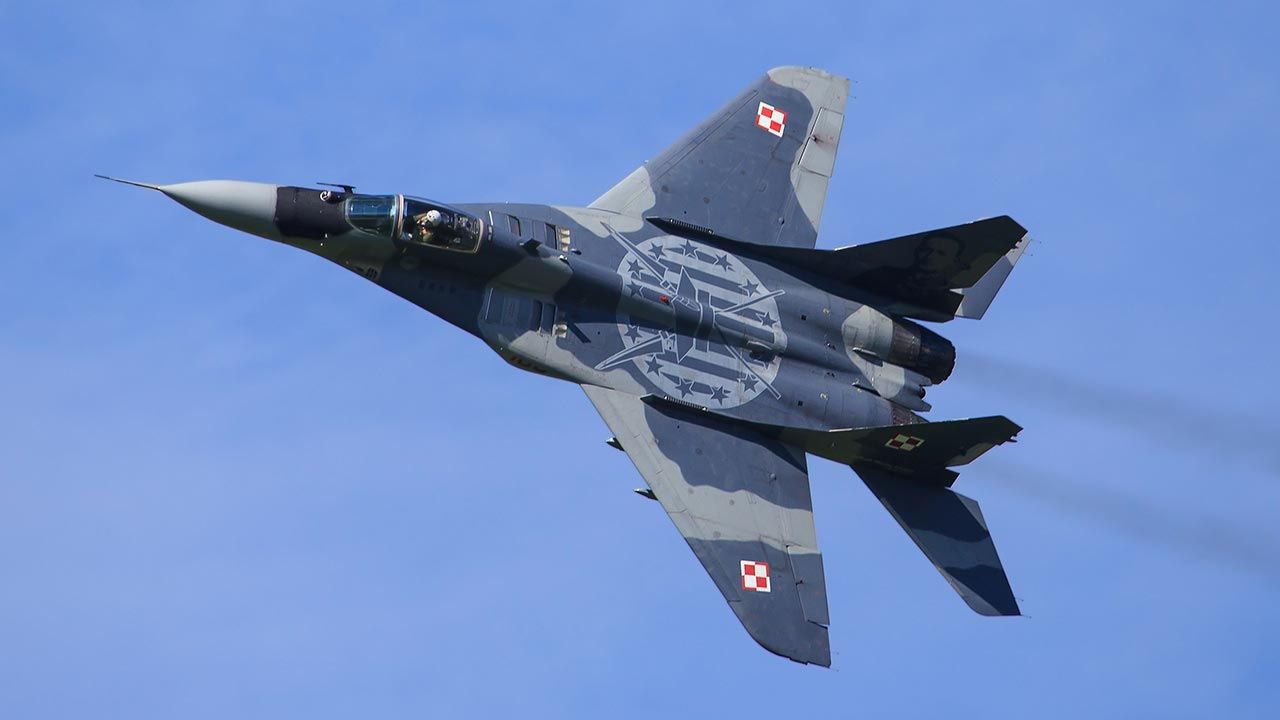Germany’s defense ministry announced on April 13 that the country had approved Poland’s request to export five old MiG-29 fighter jets, to bolster the Ukrainian Air Force against the superior Russian Aerospace Forces (VKS) in the ongoing war.
German defense minister Boris Pistorius said the request was approved the day Berlin received it. The Polish defense ministry has been steadfast about its intentions regarding the transfer of Soviet-era equipment to Ukraine.
The German approval comes almost a month after Polish President Andrzej Duda announced plans to send a dozen old MiG-29 fighter jets to Ukraine. It comes as a big win for Ukraine, which has been lobbying for the MiG-29s from NATO allies like Poland, Slovakia, and Bulgaria, who still operate the Soviet jet.
Poland, for one, purchased its MiG-29 fighters from the Czech Republic and Germany (operated by the erstwhile East Germany that was in the Communist Bloc), who did not mind giving away the aging jets to the East European state.
The MiG-29s in the Polish arsenal have survived the arrival of the F-16C/D variant from the United States. However, Warsaw believes it is finally time for these fighters. Moreover, in 2020, Poland signed a deal with the United States to purchase cutting-edge, fifth-generation F-35 Lightning II fighter jets.
The Soviet warplane, which once challenged NATO’s might and roared in the skies above Germany, is ironically on its way to Ukraine to fight against Russia.
When Duda announced that he would send the MiG-29 fighters to Ukraine, he said expressly that the jets acquired from Berlin would be forwarded to Kyiv. These fighters were acquired from Germany in 2002 and have served the Polish Air Force well.
However, a more interesting story is how these Soviet fighter jets ended up with an important NATO ally Germany in the first place.
How Did Germany End Up With MiG-29 Fulcrum?
Germany was divided into four zones after World War II because the Allies desired some control over it. Eventually, as rifts started to widen between the West and the Communist Soviet bloc, Germany was broadly divided into West Germany, controlled by the West, and East Germany, controlled by the former USSR.
The West (Federal Republic of Germany) and East Germany (German Democratic Republic) were divided by the Berlin Wall. They became the most potent symbol of the Cold War rivalry between the communist Soviet bloc and the West.

Germany was still split in 1988. GDR became the first Warsaw Pact state to receive the MiG-29 Fulcrums of the Soviet Union, just a year before Germany’s iconic reunification triggered by a massive upheaval in other Communist states in Eastern Europe.
A total of 20 MiG-29As and four MiG-29UBs were delivered to GDR between March 1988 and May 1989 to Preschen Air Base in the country’s Far East, close to the Polish border. These fighter jets, known to be one of the most advanced of that era, served the GDR until the reunification of the German state.
In October 1990, a unification treaty ratified by the Bundestag and the People’s Chamber went into effect, and the reunification of the two Germanies was complete. This essentially meant that the military assets of the GDR now came under the control of the German military.
The German Air Force Luftwaffe got these Soviet MiG-29 Fulcrums which were then integrated with newer systems, made NATO-compatible, and deployed at Laage Fliegerhorst with Luftwaffe Jagdgeschwader JG73 “Steinhoff.”
The 24 German Fulcrums also acquired updated IFF, new VHF/UHF radio, TACAN technology, and English-language cockpit instrumentation between 1991 and 1995 for use with their new NATO operator, thanks to assistance from RAC MiG. The modified jets were given the unofficial names MiG-29G and MiG-29GT (two-seater), and it was determined that they would continue to fly for an additional 12 years.
A Soviet warplane thus became a part of the bloc it sought to challenge.
The German Air Force and other NATO members soon discovered that this Soviet fighter was superior to NATO-grade combat aircraft in many areas. For instance, the impressive fighting capabilities and maneuverability, especially at low speeds, or the Helmet Mounted Weapons Sight (HMS), a system that the US Air Force and Navy did not have operational until 2003.
Moreover, the aircraft was also used to break into some sophisticated Soviet technology and allowed NATO to use the MiG-29 Fulcrum as an aggressor aircraft.
The possibility of Germany acquiring additional MiG-29s from Russia to increase its Fulcrum fleet was once raised. However, the impending introduction of the Eurofighter EF2000 ultimately decided the fate of the Soviet-built fighter.
So, sometime in the 2000s, Germany offered these fighters to Poland. Warsaw readily accepted the offer at the time, purchasing 22 Luftwaffe aircraft for a symbolic 1 Euro each, including four MiG-29UBs. Additionally, weaponry and ground gear were part of the package to Poland.
Now that Polish Air Force is staring at modernization beyond archaic Soviet equipment, the transfer of MiG-29s is a feasible prospect. However, since the warplanes originally belonged to Germany, approval from the country was imperative, much like the Leopard-2 tank transfer.
- Contact the author at sakshi.tiwari9555@gmail.com
- Follow EurAsian Times on Google News




